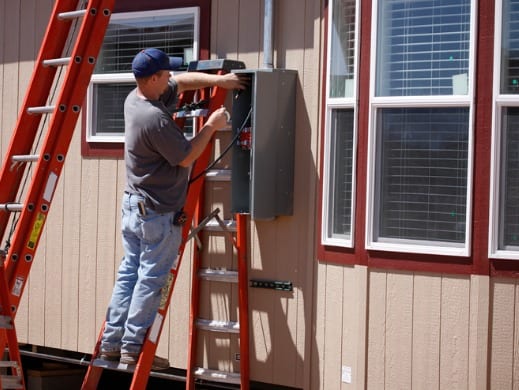This has been a historic year for clean energy funding. One of the most notable milestones was the passing of the Inflation Reduction Act (IRA) which brings billions of incentive dollars to American households. The federal government’s goal outlines $858 billion for residential electrification, averaging $10,600 for participating households.
The IRA is projected to unlock over a trillion dollars of economic benefits. But how will homeowners access this money and what can states, utilities, and private companies do to accelerate the distribution of these incentives?Through our technology, Uplight enables white-labeled ecommerce platforms for utilities to sell and distribute energy-efficiency products, such as Level 2 EV Chargers. The technology enables point of purchase rebates, so customers can access incentive dollars at check-out rather than paying the full amount out of pocket and waiting for a rebate check weeks or even months after purchase.
One of the most common barriers to Level 2 charger adoption is the complexity of installation. This is why Uplight has teamed up with Qmerit, a national network of electricians certified in Level 2 Charger installations and the ability to perform electrical panel upgrades. This partnership enables customers to seamlessly schedule charger installations at the same time they purchase the charger from their utility website. In addition to product rebates, Uplight and Qmerit can distribute wiring and make-ready rebates that can cover costly panel upgrades necessary for an estimated 48 % of homes installing a Level 2 Charger.
Together, Uplight and Qmerit have identified four best practices for accelerating EV incentives.
- Foster state and utility collaboration
Where funding comes from for Electric Vehicle Supply Equipment (EVSE) rebates, such as Level 2 Chargers for residential homeowners, can vary across the United States. In some instances utilities offer rebates but funding may also come through state energy offices or separate transportation budgets. It is important for these institutions to collaborate to determine the most effective channels for rebate distribution.
States can leverage existing relationships utilities have established. If a utility has an existing Marketplace, customers can learn about rebate promotions through existing marketing or communications they receive. Suppose a state energy office is offering a Level 2 charger rebate. In that case, they should explore enabling that rebate on existing utility Marketplaces where instant rebates are applied, enhancing the customer experience.
- Create meaningful incentive amounts
While EVSE and make-ready rebate amounts vary widely, they need to be enough to encourage customers to make the investment. Utility rebates on Level 2 chargers for residential customers typically range between $100 and $500, with $250 being the average rebate amount but some rebates can be as much as $700. The average amount is effective in increasing overall charger sales across utility Marketplaces. Uplight has found that rebated chargers sell 3.5 times more than non-rebated chargers.
For customers requiring a panel upgrade, the average cost is between $1,300 and $3,000, something many customers have not planned for. To lessen the sticker shock and help gently guide customers through home electrification, utilities and state energy offices should consider make-ready rebates in addition to EVSE rebates.
- Limit requirements to avoid customer burden
Putting checks and balances in place to ensure that rebates are being distributed to those investing in an electric vehicle is important. Uplight’s platform enables utilities to require eligibility criteria to avoid abuse of incentive dollars. However, making those requirements overly burdensome can deter customers from moving forward with an EVSE purchase. To simplify the process, Uplight recommends asking for vehicle year, make, and model. Requiring additional information such as vehicle VIN or paperwork showing a record of the car purchase can cause customer drop-off.
Qmerit has performed over 200,000 EVSE installations and has found that approximately 50% of residential installations happen before a customer has received their vehicle due to supply chain shortages and backorders. Customers also cite a desire to have charging infrastructure in place and ready to use when they bring their EV home. Rather than requiring proof of purchase or a vehicle identifier, utilities can add terms and conditions that allow them to request vehicle purchase verification after the EVSE installation to not slow down the charger purchase and installation process.
- Make wiring rebates simple
Incentives for panel upgrades can drive customers to the finish line when it comes to taking the action to purchase and install a Level 2 charger. Rather than having customers fill-out additional paperwork and upload photos to a separate rebate portal, Qmerit enables the integration of that process within the installer’s workflow for required documents and photos. Qmerit also recommends applying the wiring rebate as a credit to the final installation invoice instead of requiring a separate incentive application workflow to make the process as seamless as possible.
By investing in the customer experience and partnering with states, utilities can help customers access EV incentives while removing some of the most common barriers to adoption and installation–ultimately improving uptake and customer satisfaction.
For a deep dive into the full customer experience of purchasing a Level 2 charger and having it installed check out Uplight’s blog post on EV Charger Installation Research with EV Owners and Contractors.




